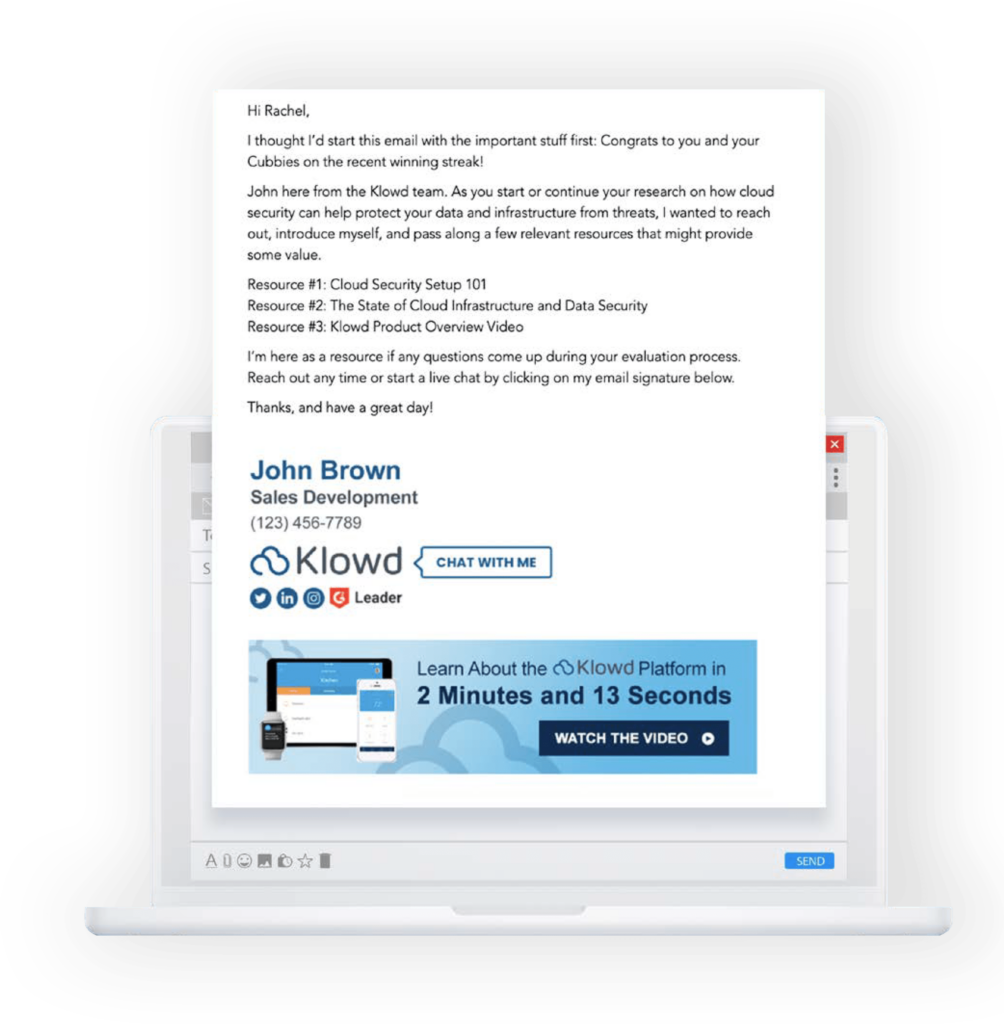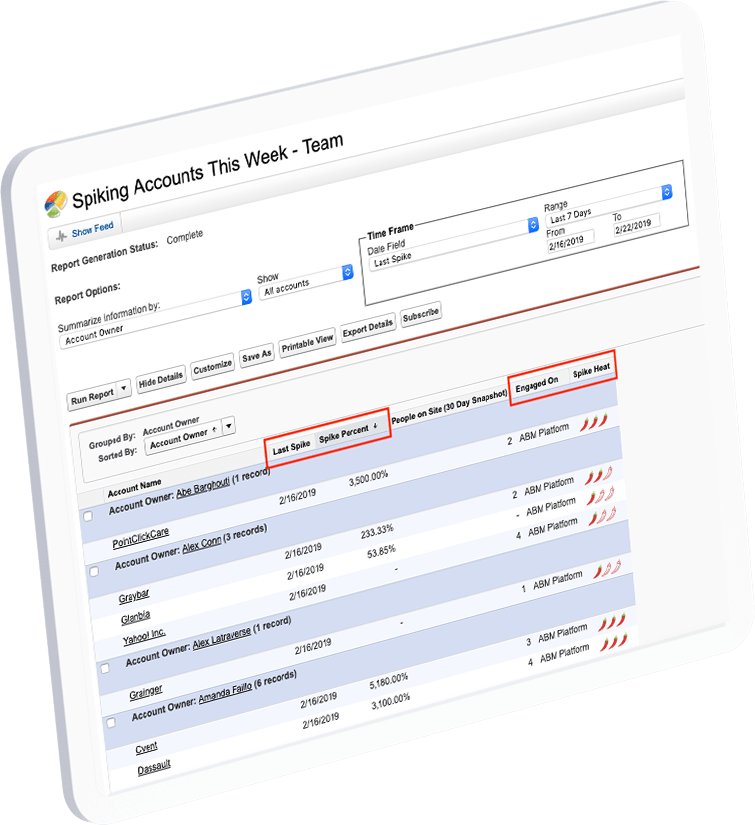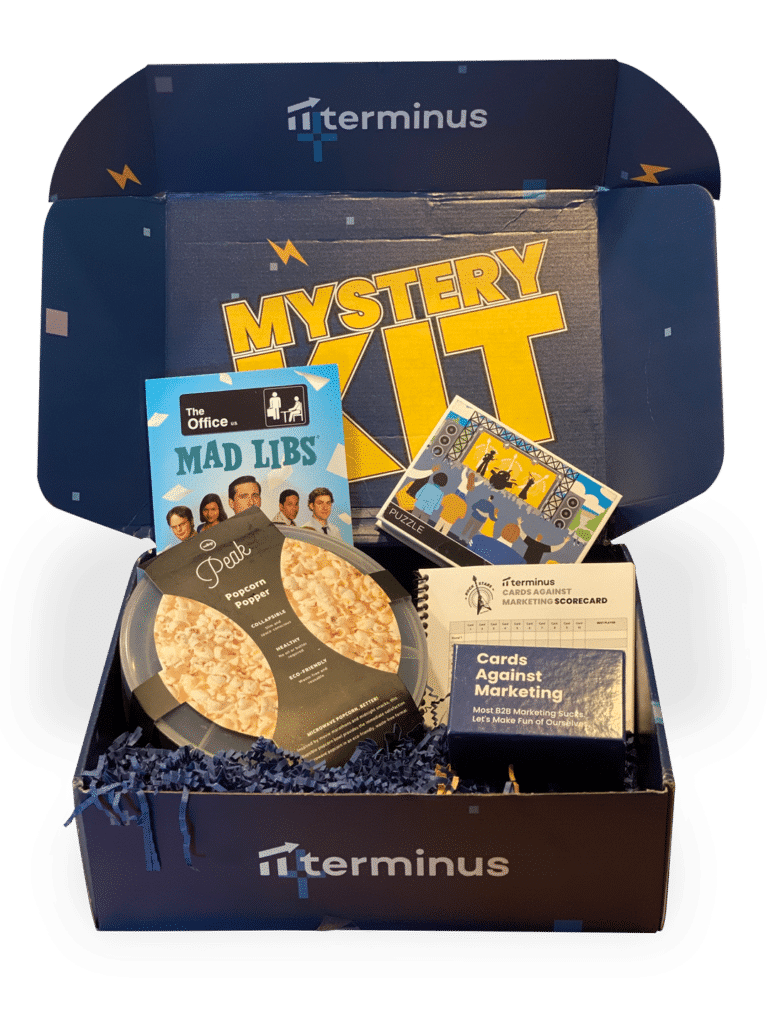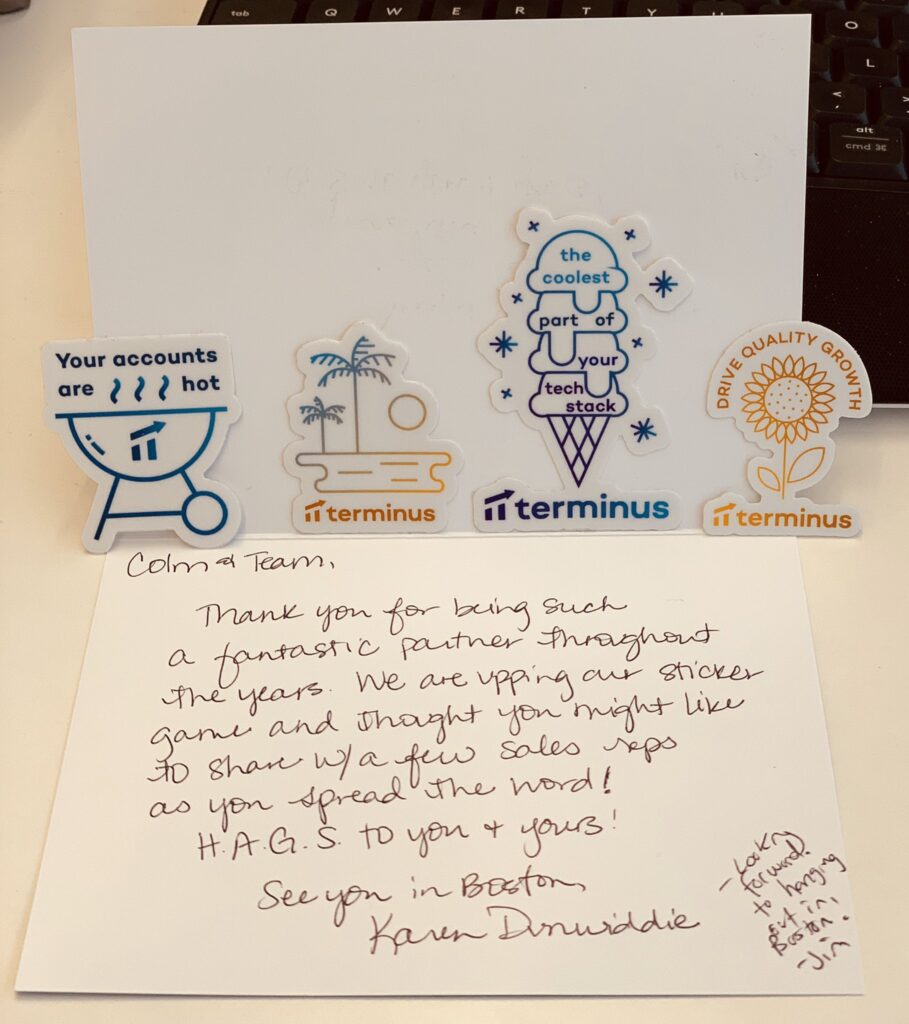Real talk: your company is probably already dabbling in account-based marketing and you don’t even know it. Surprise… and congratulations! But how do you level up to make sure that it’s firing on all cylinders (while making yourself look like the marketing hero that we all know you are)?
When done well, ABM equals more revenue and happier customers. But first you need a place to start – so let’s crawl first before we walk or run. Our team of experts has brainstormed, tested, and run four different multi-channel starter ABM campaigns so you don’t have to.
How do I get people to commit to my sales calls?
You’ve set the meeting and now it’s time to seal the deal. But what if your contact doesn’t show? It’s not uncommon for prospects to bail on a demo or sales call. Let’s fix that.
After you’ve done some stealthy pre-meeting research (thank you, social media) to find out that your prospect has a minor Starbucks obsession, go ahead and fire off an egift to your prospect. Don’t forget to include a personalized note about how you know all about that midday meeting lull, and you wanted to arm them with a latte before your meeting! Easy peasy.
TIP: We’ve found success increasing sales call attendance by sending digital gifts an hour before a call. For example, Procore experienced a 16% increase in demo show rate which contributed over $1.2 million into their pipeline after sending digital gifts via Sendoso before a demo call.
Don’t forget to set up a Salesforce campaign to keep track of every account that receives a pre-meeting gift so that you’re able to report on your success. Voila! You’ll see an immediate uptick in your demo completion rates!
Check out page 5 of this ebook for an outline on prep time, team and tools that you need to measure, assess, and iterate on the data to grow those completion rates.
How do I personalize the right message once I see intent?
When done at the right time, personalized messages and connected account experiences simultaneously build personal rapport and brand affinity, ultimately leading to better sales and more renewals. But when you miss, you’ll see an increase in opt-outs, closed-lost opportunities and a whole bunch of mess.
It’s all about intent. Once your team notices that a target account is engaging with your brand either through a Terminus Engagement Spike or another trigger-based mechanism, it’s time to jump into action.
Once you see intent and can figure out the right people (known and unknown) and have their contact information, you’re gold. Your goal should be to get as smart as possible. Get crafty with your research because you’ll want to wow them with what you know.


It’s also key to understand the spike. Which emails have they engaged with? Which ebooks did they download? Which webinars did they attend? That information—along with the research that you’ve done—will have you armed and ready to create targeted messages across multiple channels that will position you as the resource they can’t live without. It’s all from understanding their intent.
Our playbook will show you how you can assemble a small team, activate a few slick tools, and be off and running in less than four weeks. You’ll measure, iterate, and keep driving up your ROI.
How do I create an ABM campaign that will give high-value accounts VIP treatment?
High value accounts with large annual contract values (ACVs) may warrant a higher touch activation. This is an opportunity for your SDRs to involve your AEs, CSMs, design team, and digital marketers on the front end to orchestrate really making an impact.
Once there’s an engagement spike, it’s time to dig into the account, understanding the buying committee members and size, previous outreach, and campaign influence, etc. The SDR should share this in-depth research with the graphic designer and digital marketing manager to develop display assets for additional air cover. Encourage your AEs and CSMs to participate in the campaign to present a unified—and consistent—front.
Once you’ve landed on the messaging strategy, consider adding a direct mail campaign to show your VIPs that you’re all in on your relationship. Then it’s time to kick off a high-end, full-court press display campaign that shows that you haven’t missed one single detail.


RULE OF THUMB: the higher value the account, the more channels and research you should commit to each touch.
Don’t forget to regularly assess top accounts each quarter to determine which accounts do—and don’t—warrant the spend to ensure that they keep moving the needle with revenue.
Page 13 will walk you through how to deliver personalized messaging across one-to-one channels, including email, LinkedIn InMail, Twitter messages, and more to knock it out of the park with your top-tier accounts.
How do I set up an account to help SDRs prioritize and personalize efforts directly from a CRM?
Every sales organization has their own process for prioritizing account based marketing activities. Your SDRs (and AEs, too) should begin this play right when they come into the office each week.
It’s critical to set up the right reports for this tactic. With Terminus, your SDRs can create a report that filters for accounts that have had an engagement spike in the last week or have shown recent intent. When both of those signals are present, it’s time to go after them. Now.
TRY THIS: Your team will want to filter out any accounts that your team has touched in the last week. That way, you won’t see accounts that you’re already working with in this report.
Your reports should drive your strategy. You’ll want to be able to see:
- Number of visitors from the account on your site (known or unknown)
- This will tell you how wide the consideration is in the account, AND give you a sense of the size of your buying center.
- Recent ad impressions
- This column will tell your team if marketing is actively warming the account.
- Most active URLs
- This column will help you understand what topics the account is researching so that you can really focus your outreach.
Your team will also want to consider:
- Most active person
- This will help you dial in on who to reach out to.
- Intent and engagement trends over time
- This will show you whether the account is leaning in or out.
Understanding these metrics will help you take the guesswork out of following up and help your marketing and sales teams stay dialed in on which accounts they should be following up with.
It’s critical that your teams understand intent and engagement because we know that 78% of deals go to the team that gets there first.
Hold a regular training session with your marketing and sales teams so that every single member of the team understands how the reports work, how to sort them, and what criteria determines a “hot” account. Account-based prioritization will help ensure that the right accounts are on everyone’s radar and fewer opportunities are being missed.
It’s important to set KPIs to encourage your SDRs to jump on accounts immediately after an engagement spike or an intent surge.The faster your sales team can act on data, the faster your sales cycle will be.
When you download our ebook, you’ll also get access to a fun field guide that outlines best practices and pitfall warnings for the different types of intent data that are available today.
If you’re ready to take your ABM to the next level by “walking” (creating long-term plays for intermediate ABM teams) or “running” (executing complex, multi-channel plays designed for highly-established ABM teams focused on big strategic goals), we’ve got you covered with our Crawl, Walk, Run Multi-Channel ABM Playbook.

